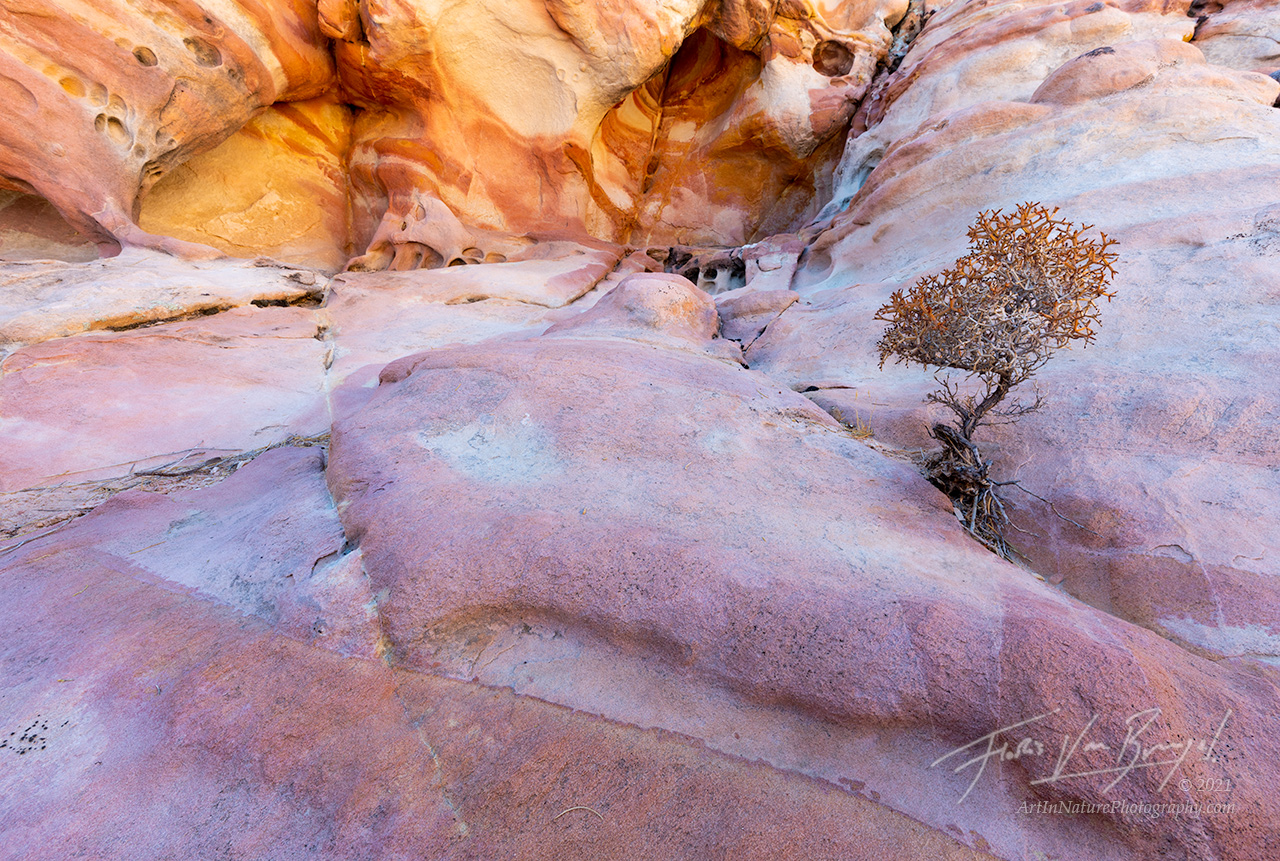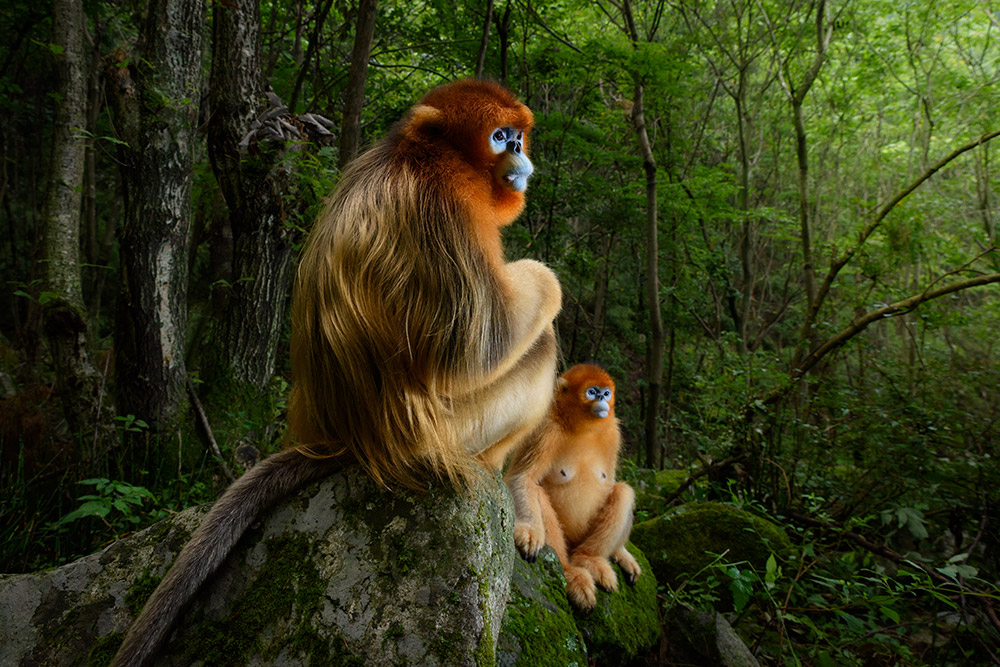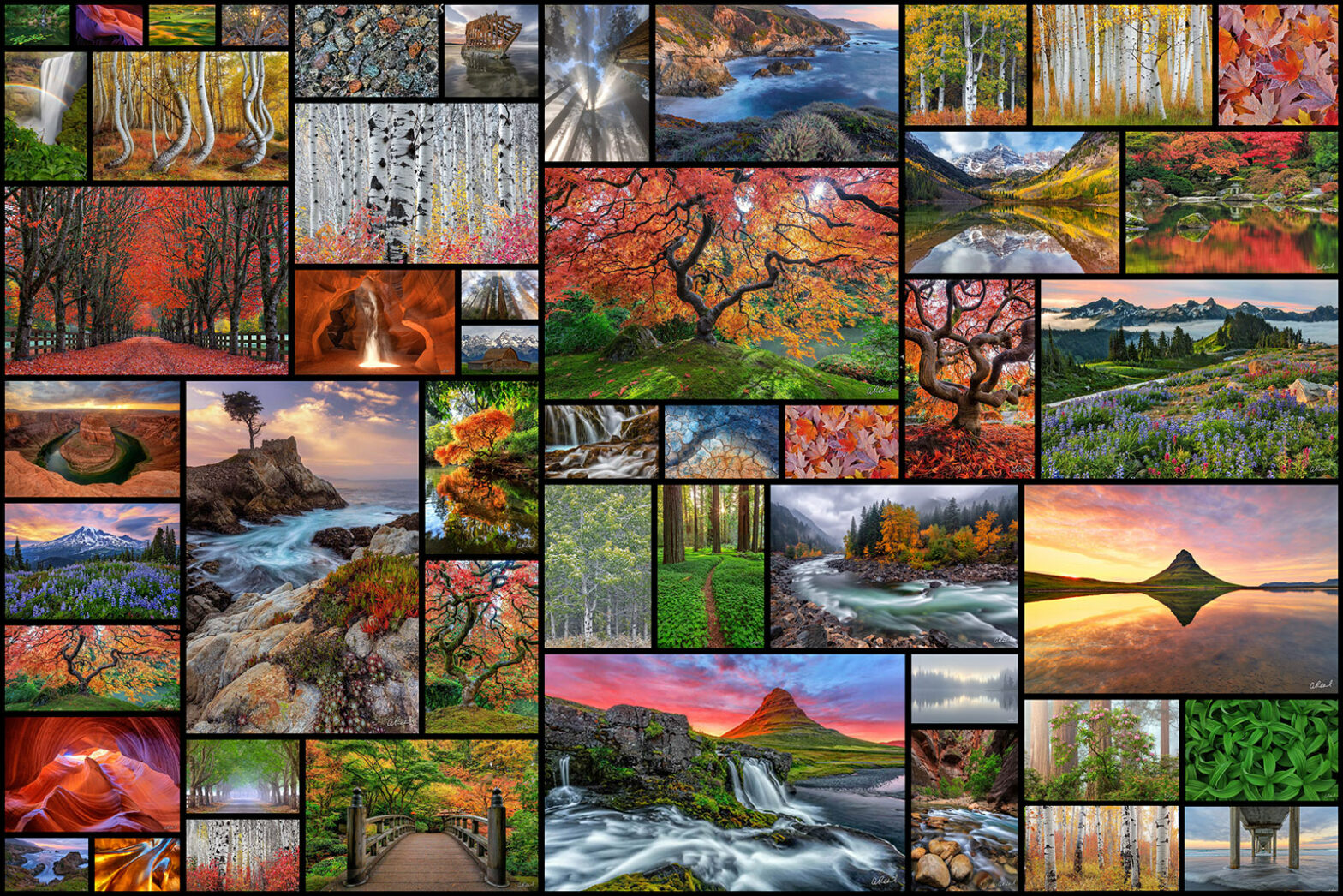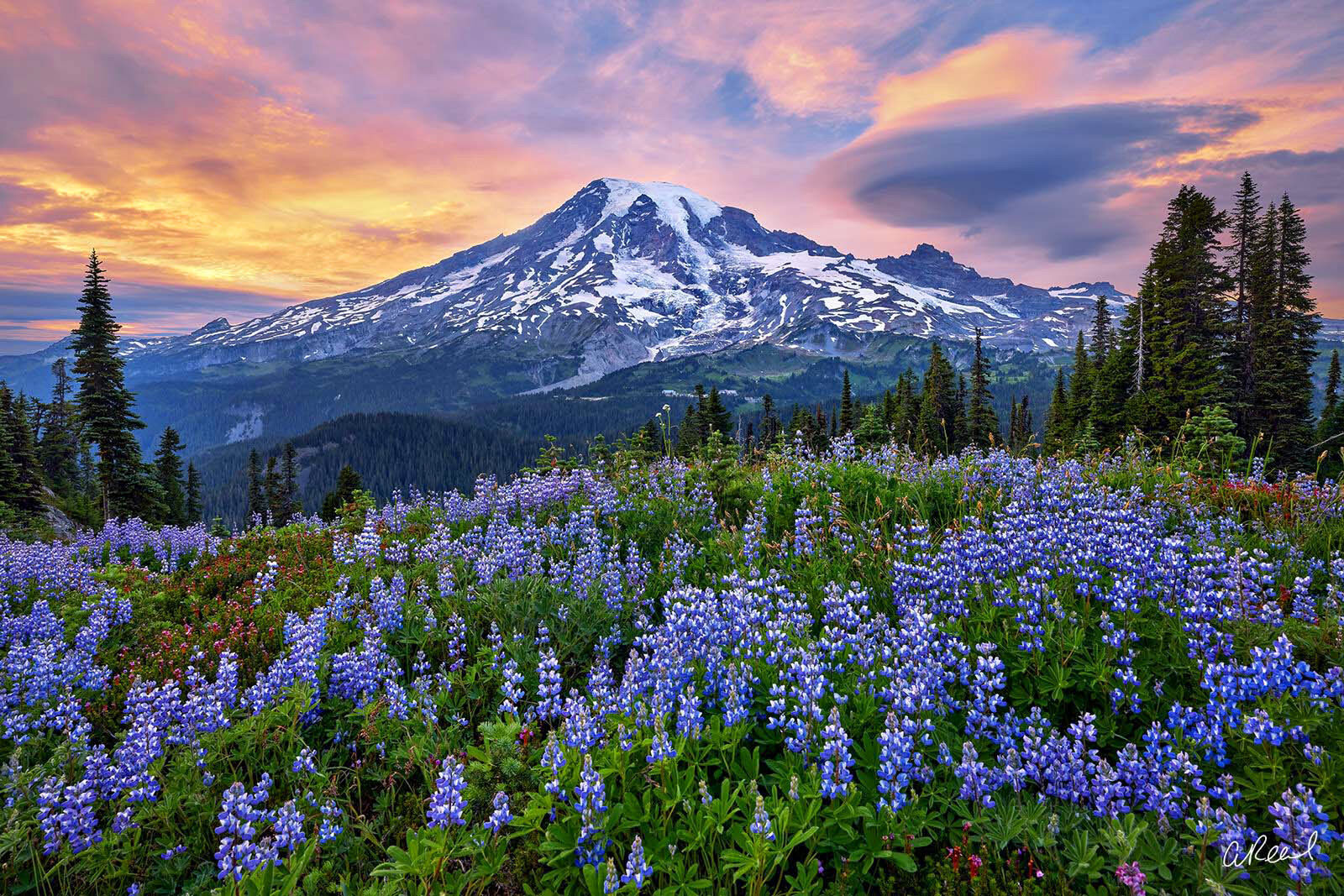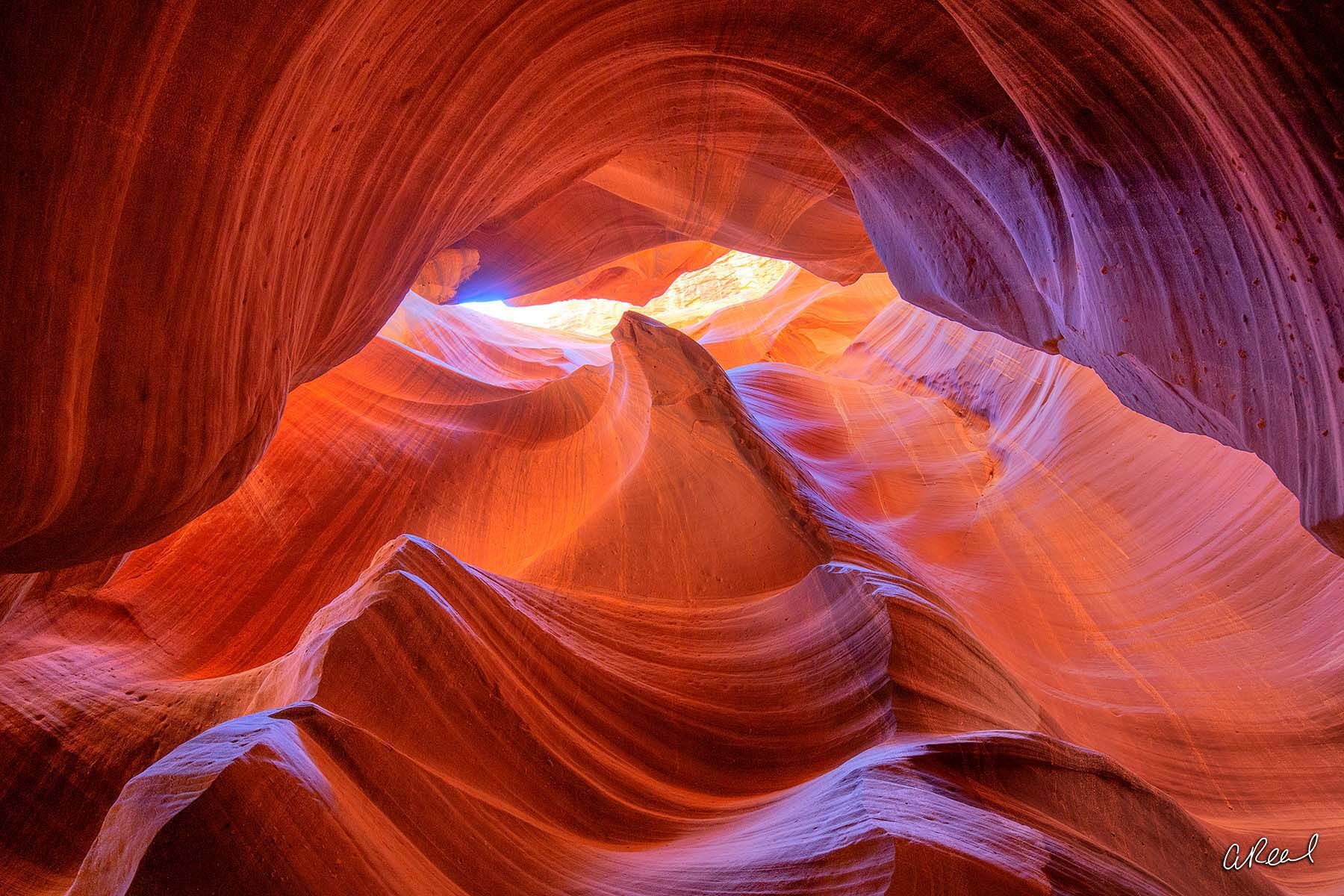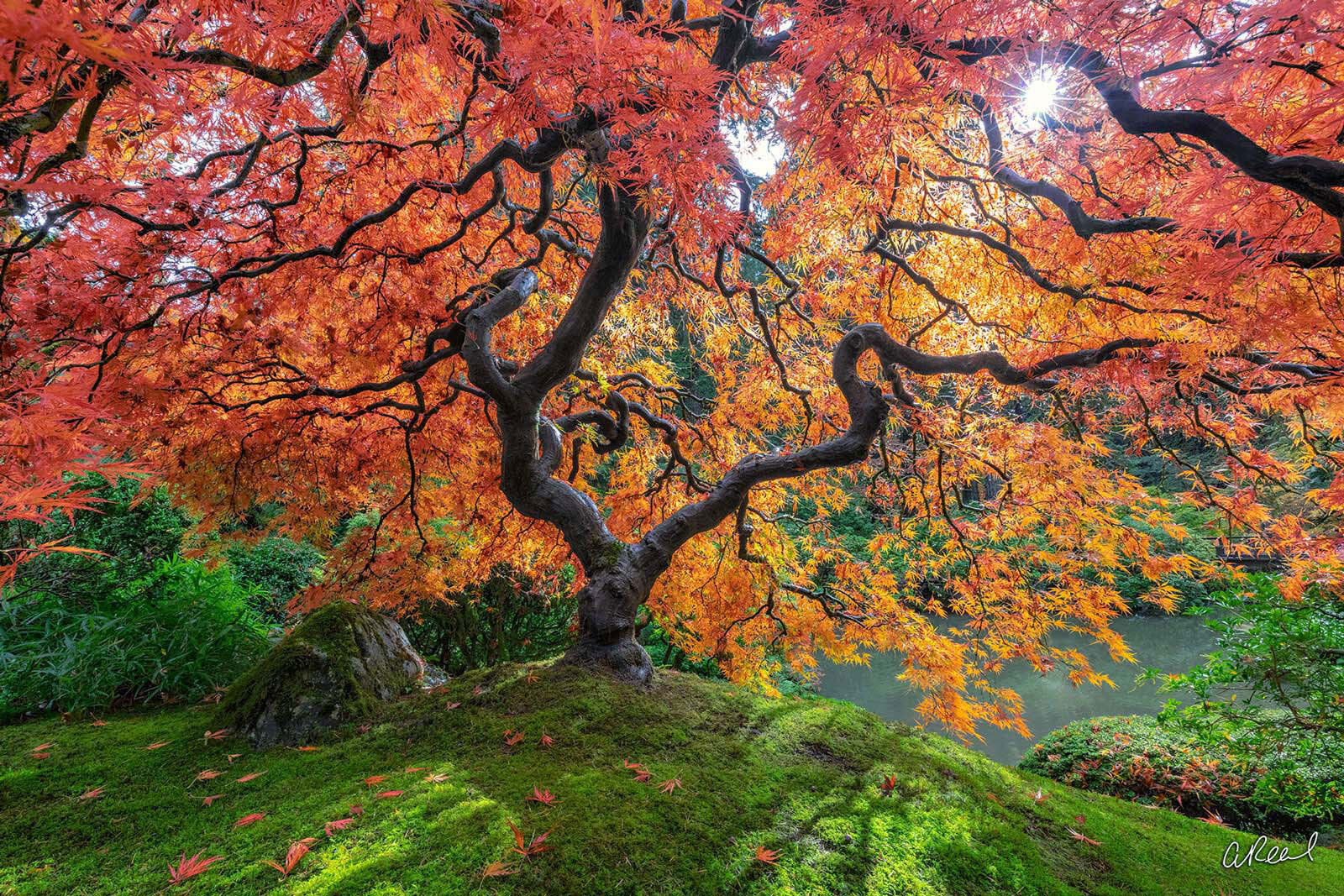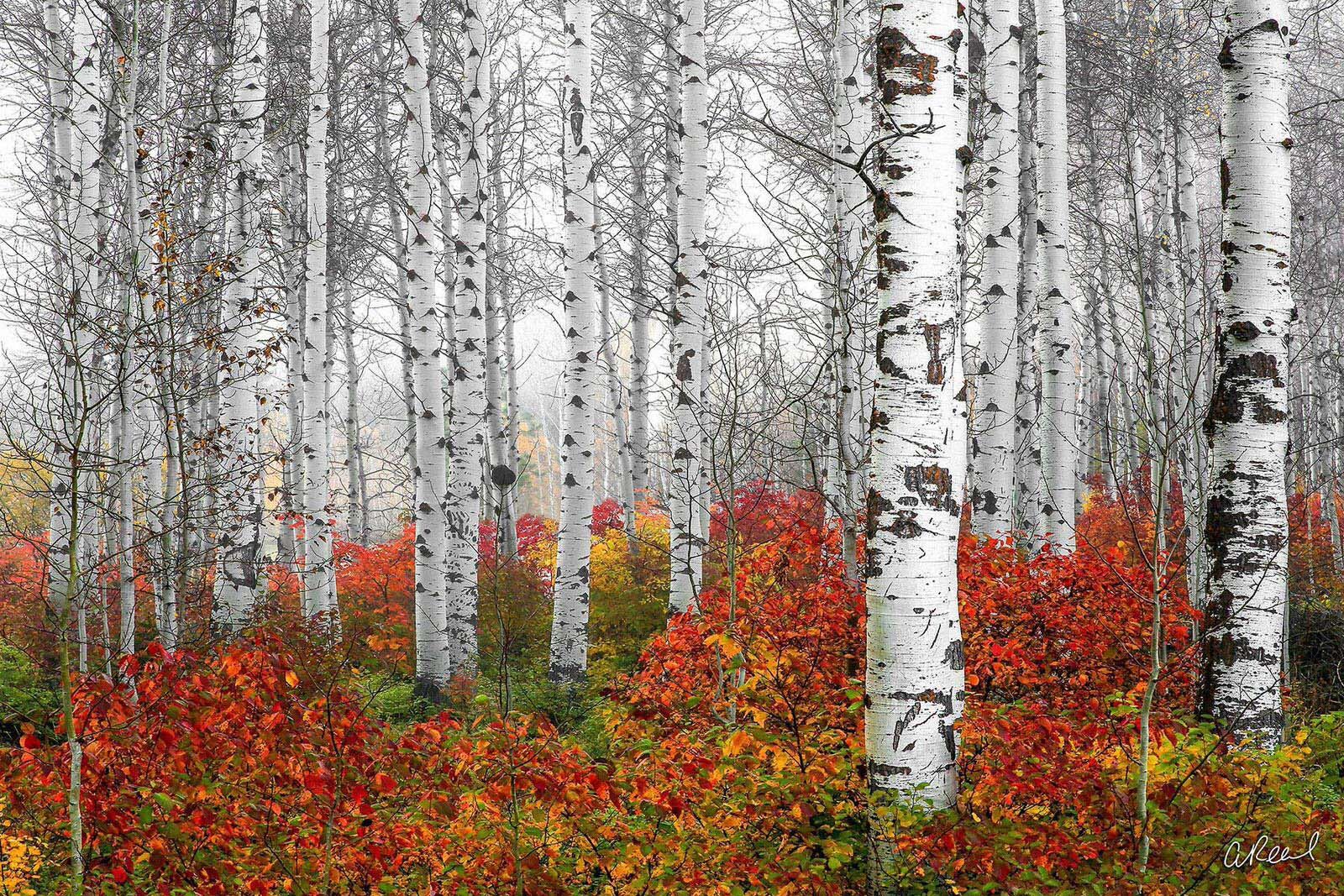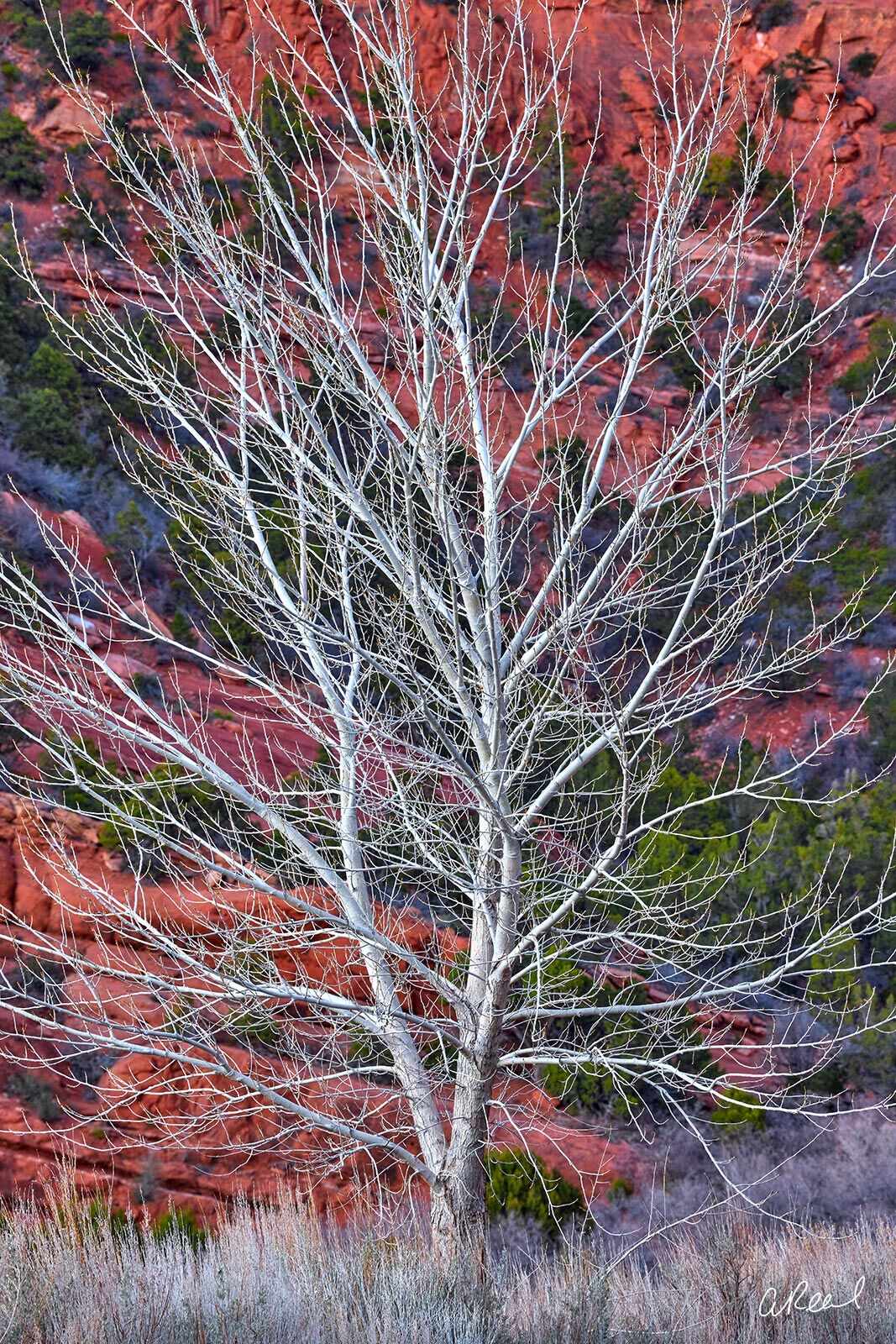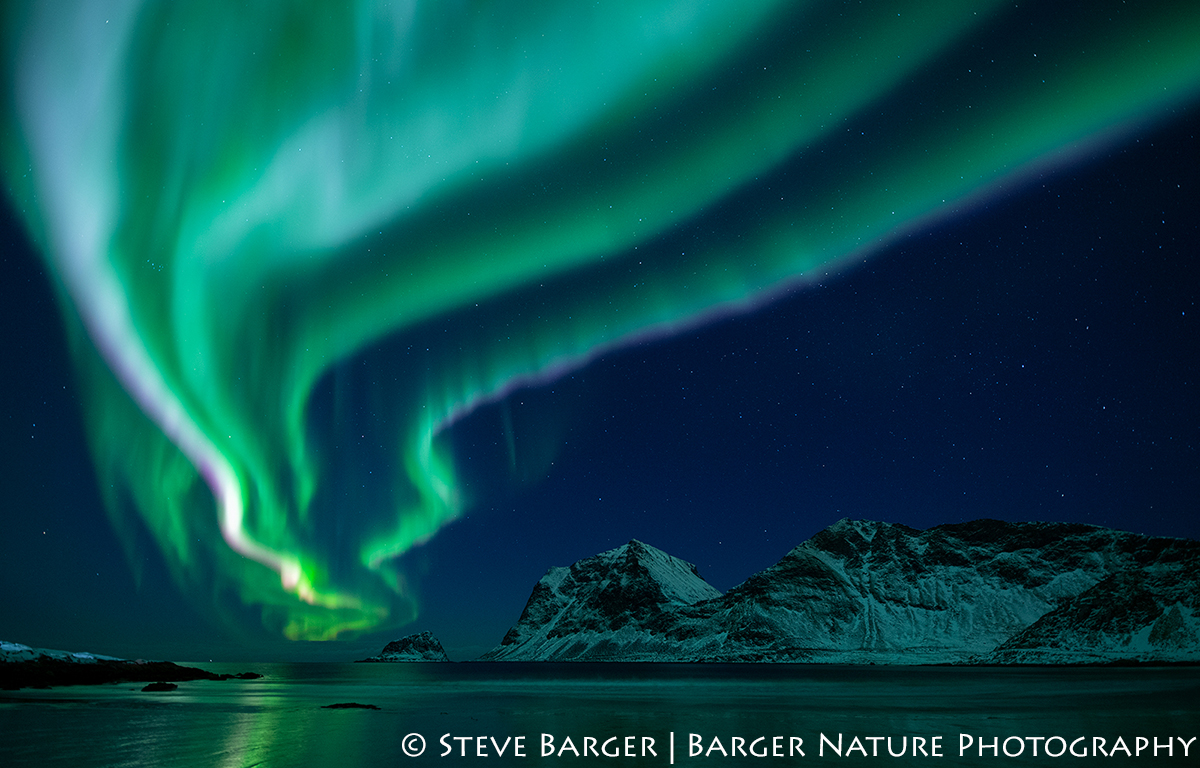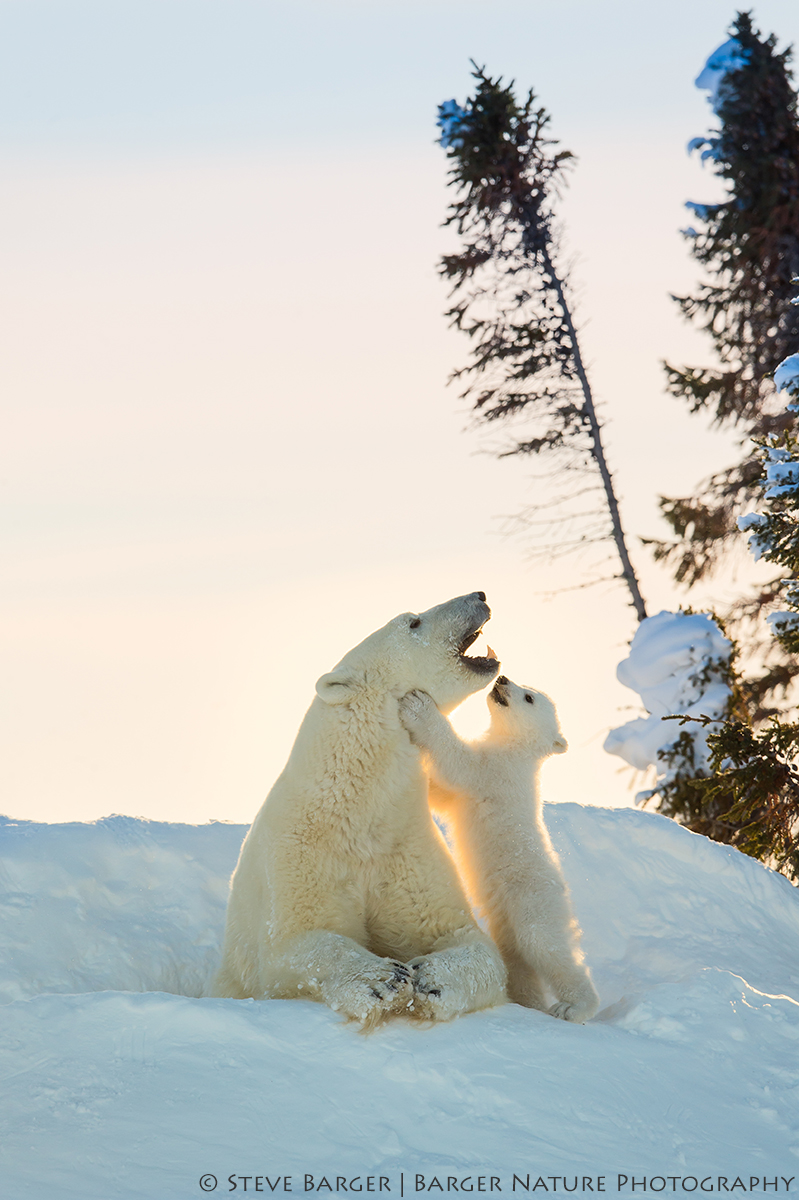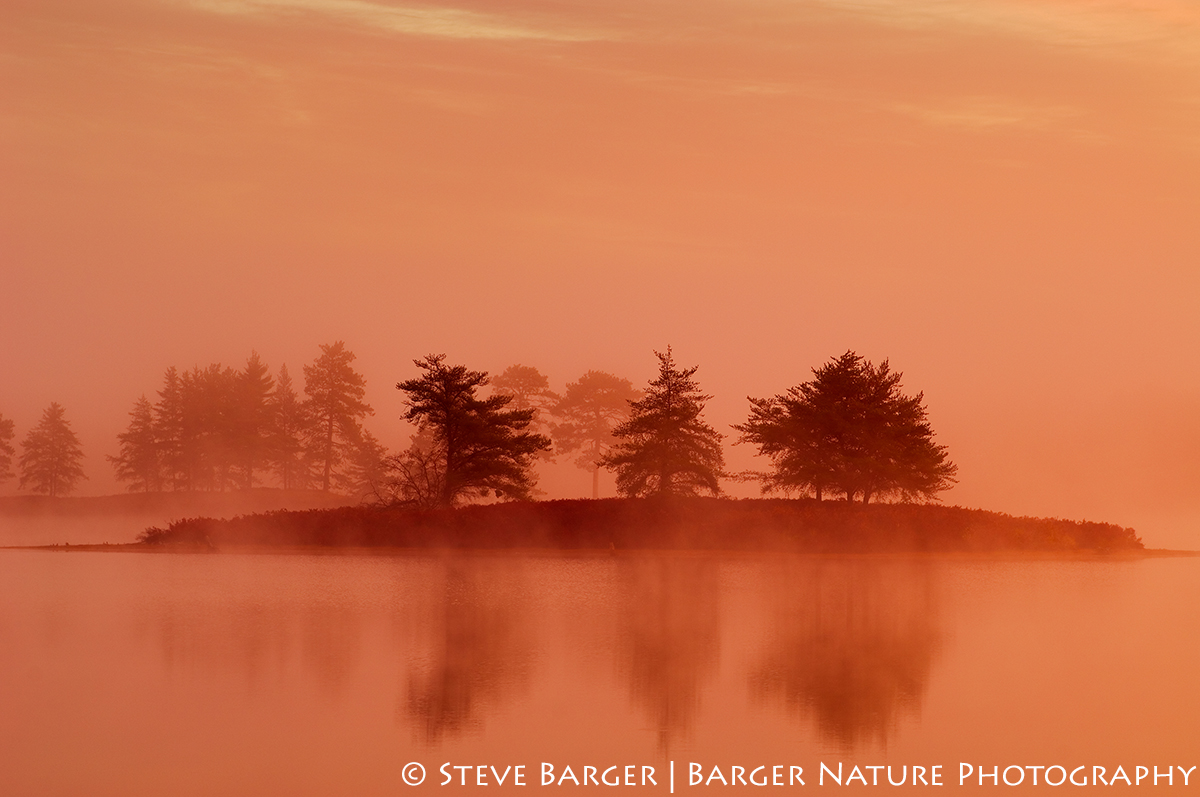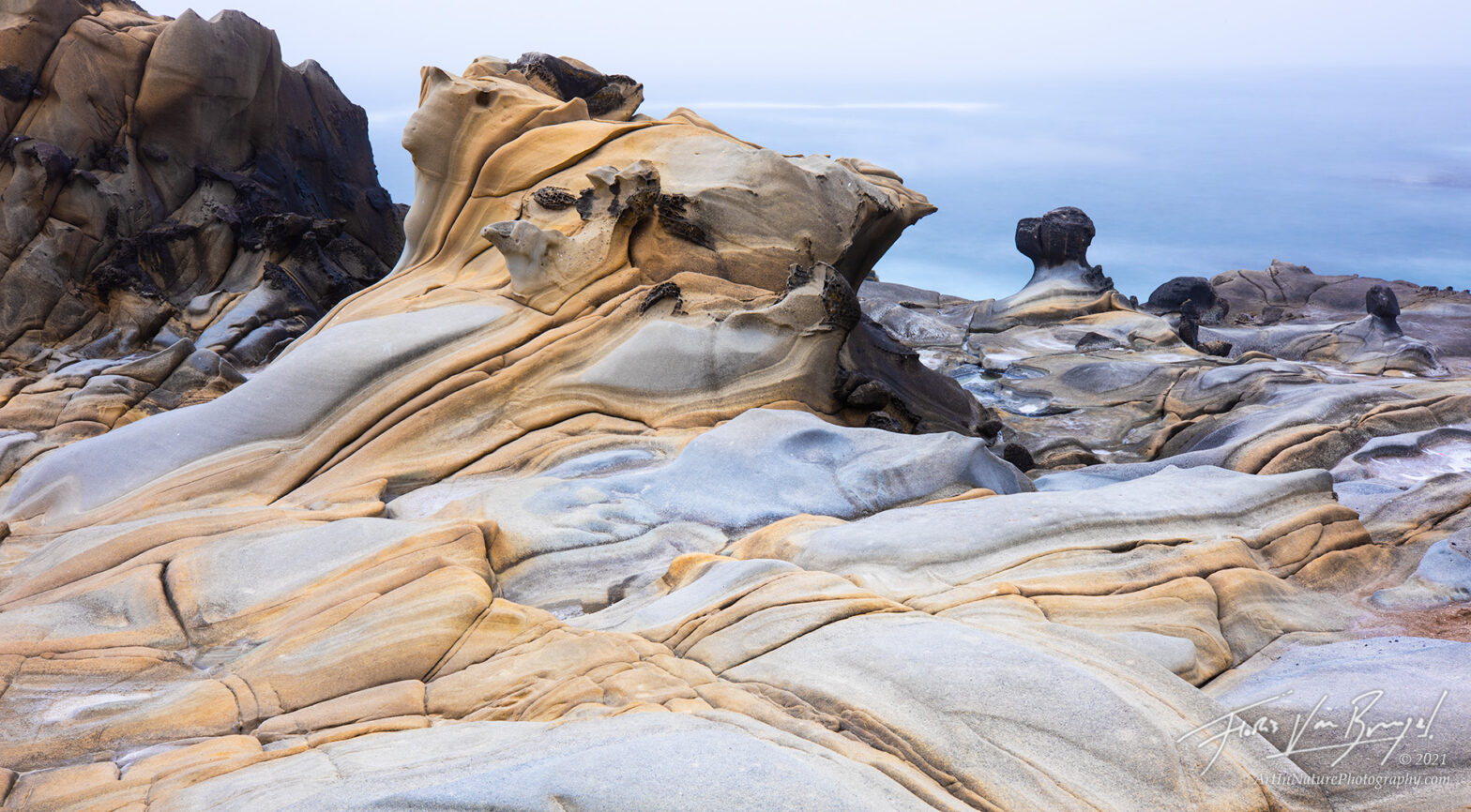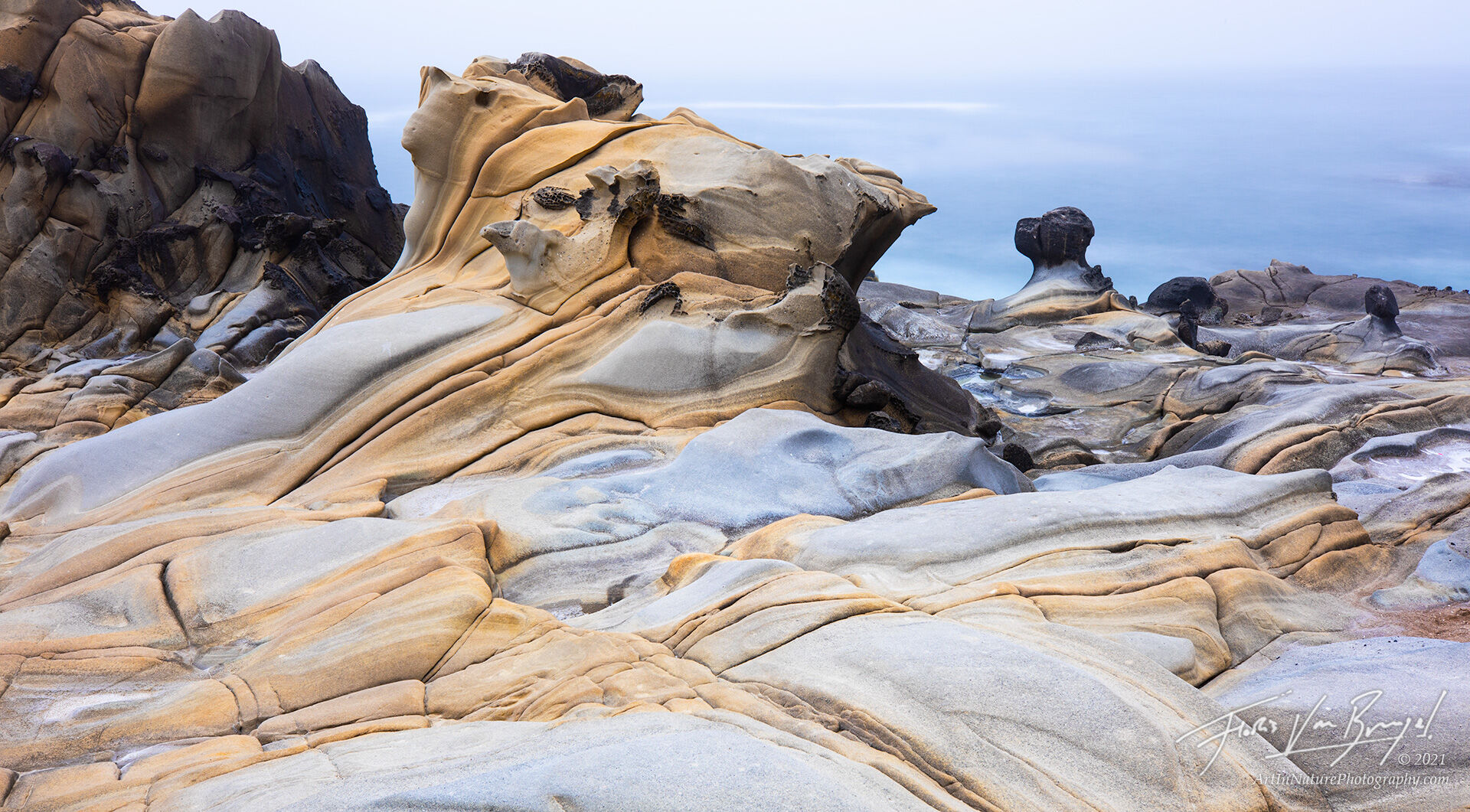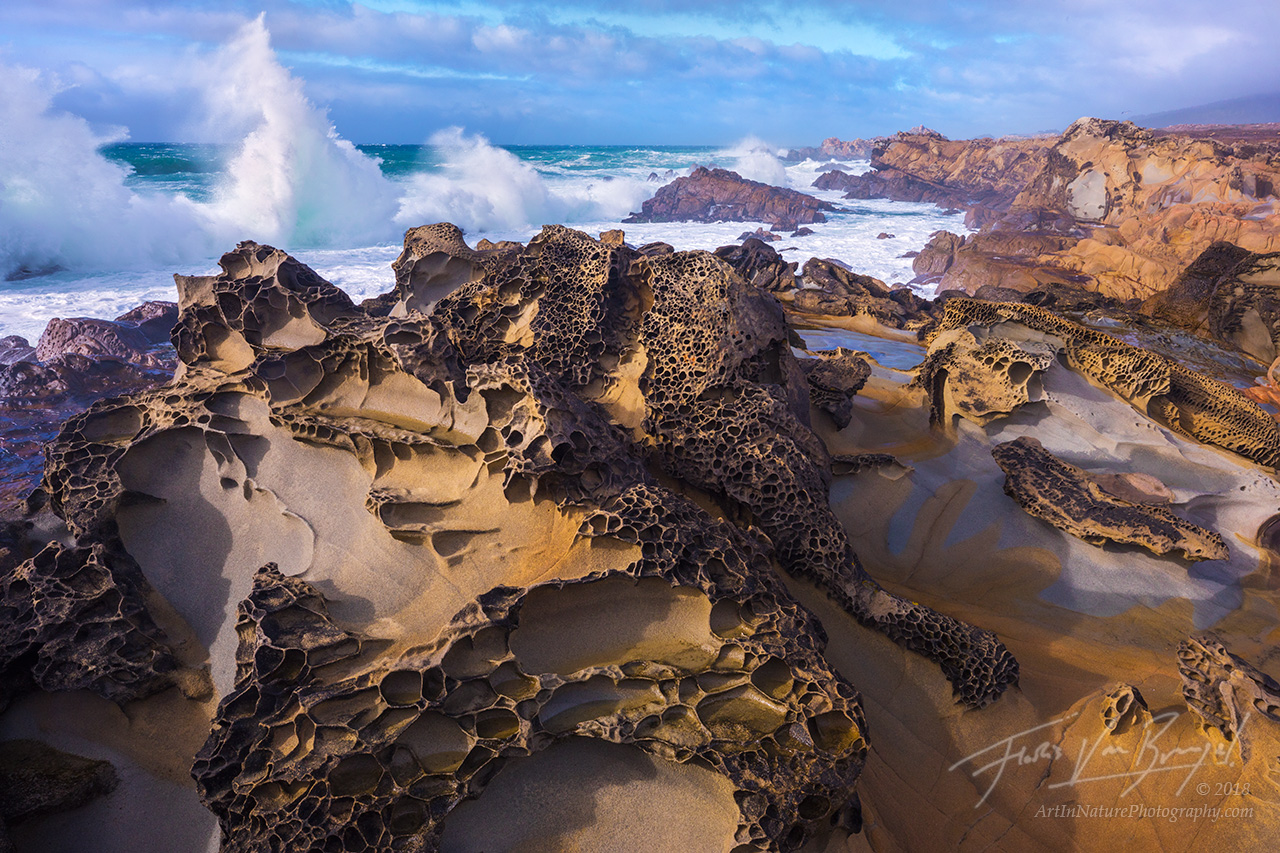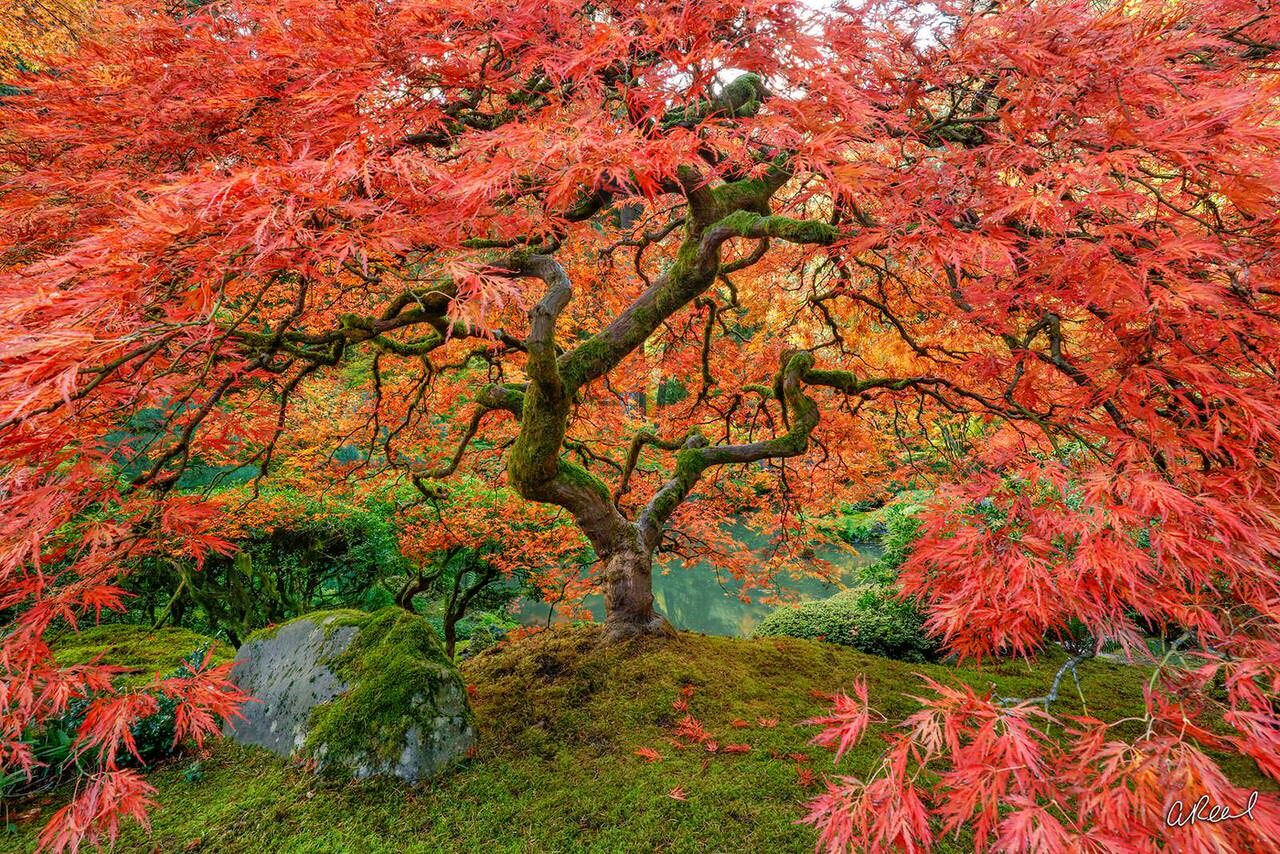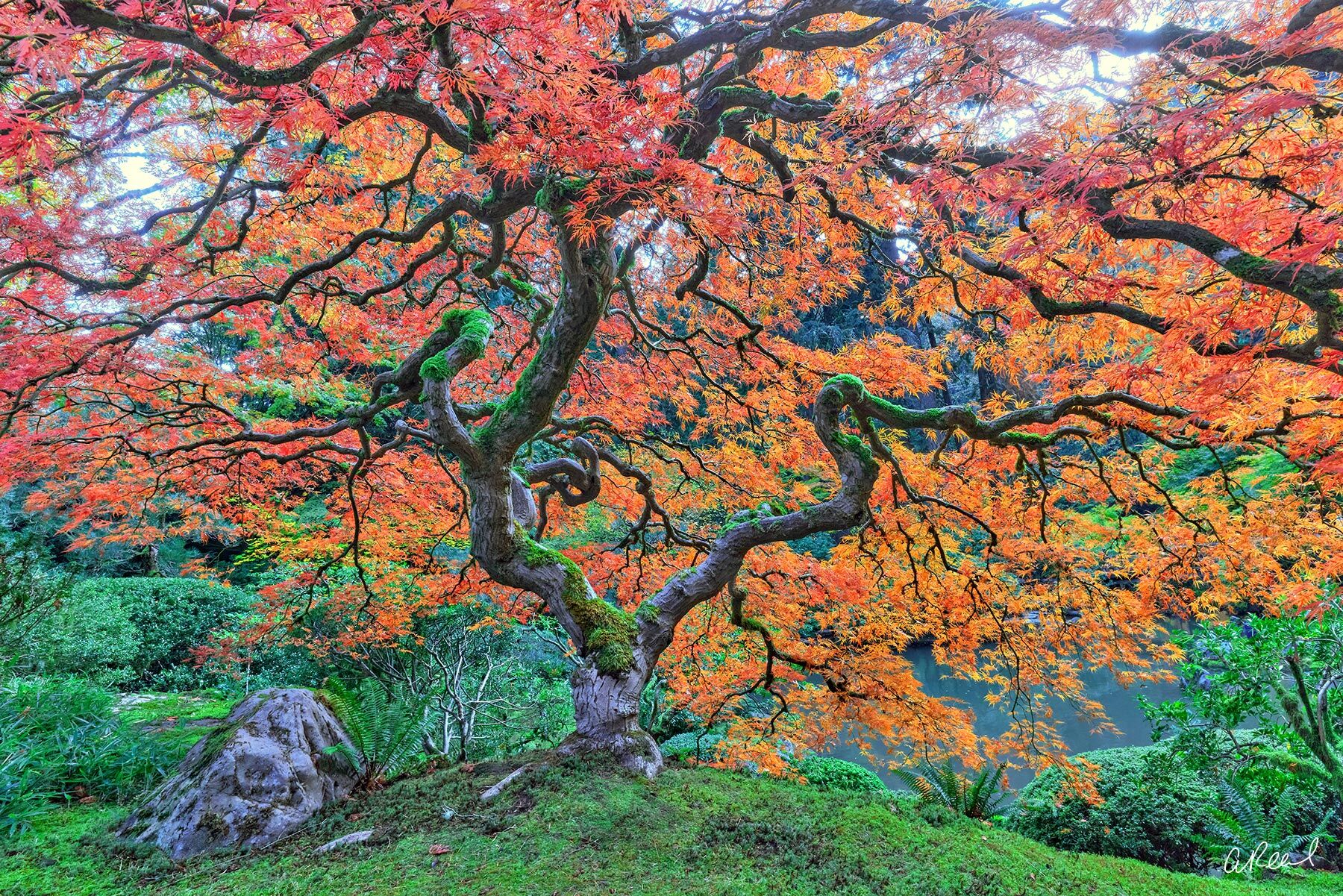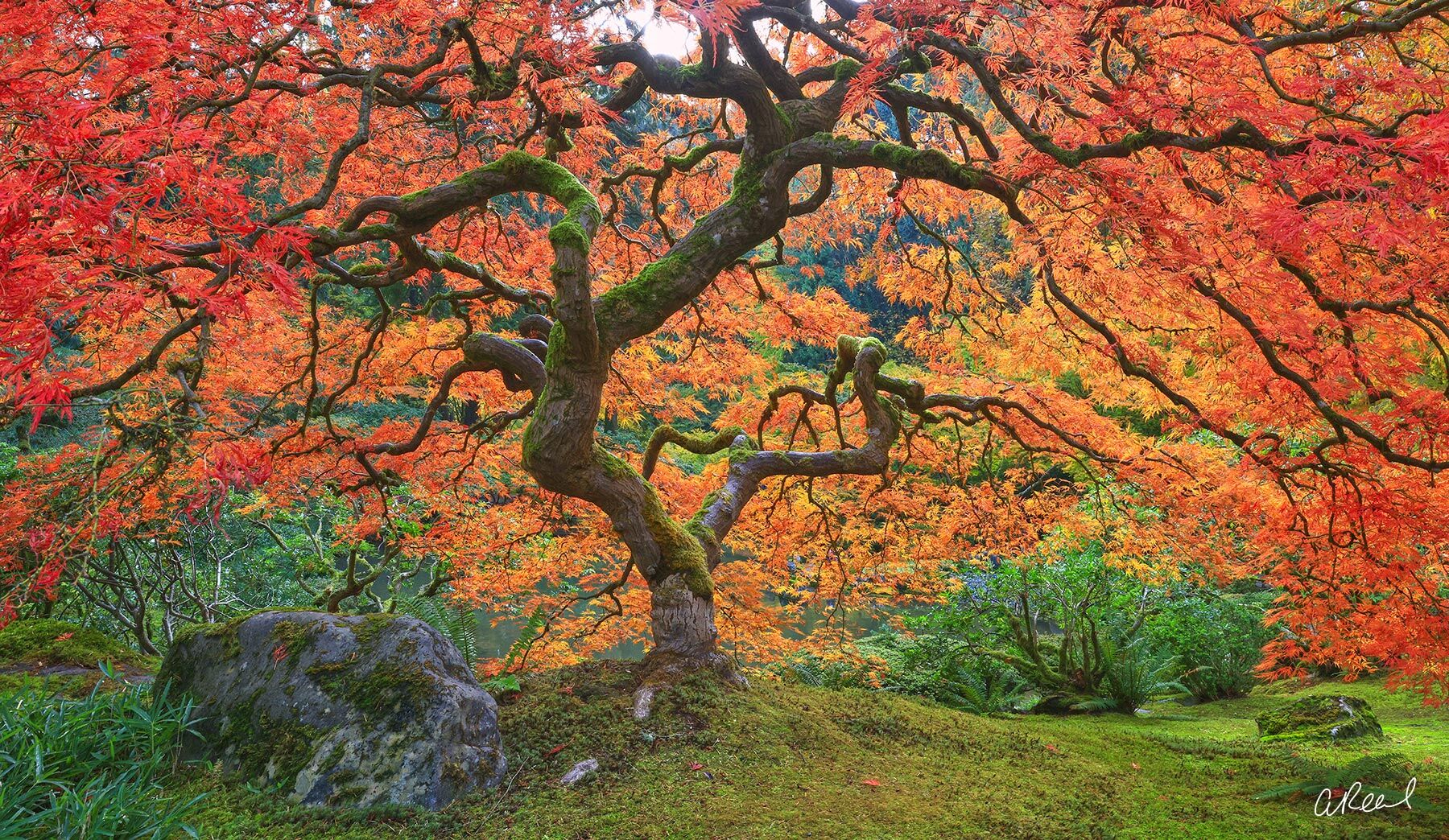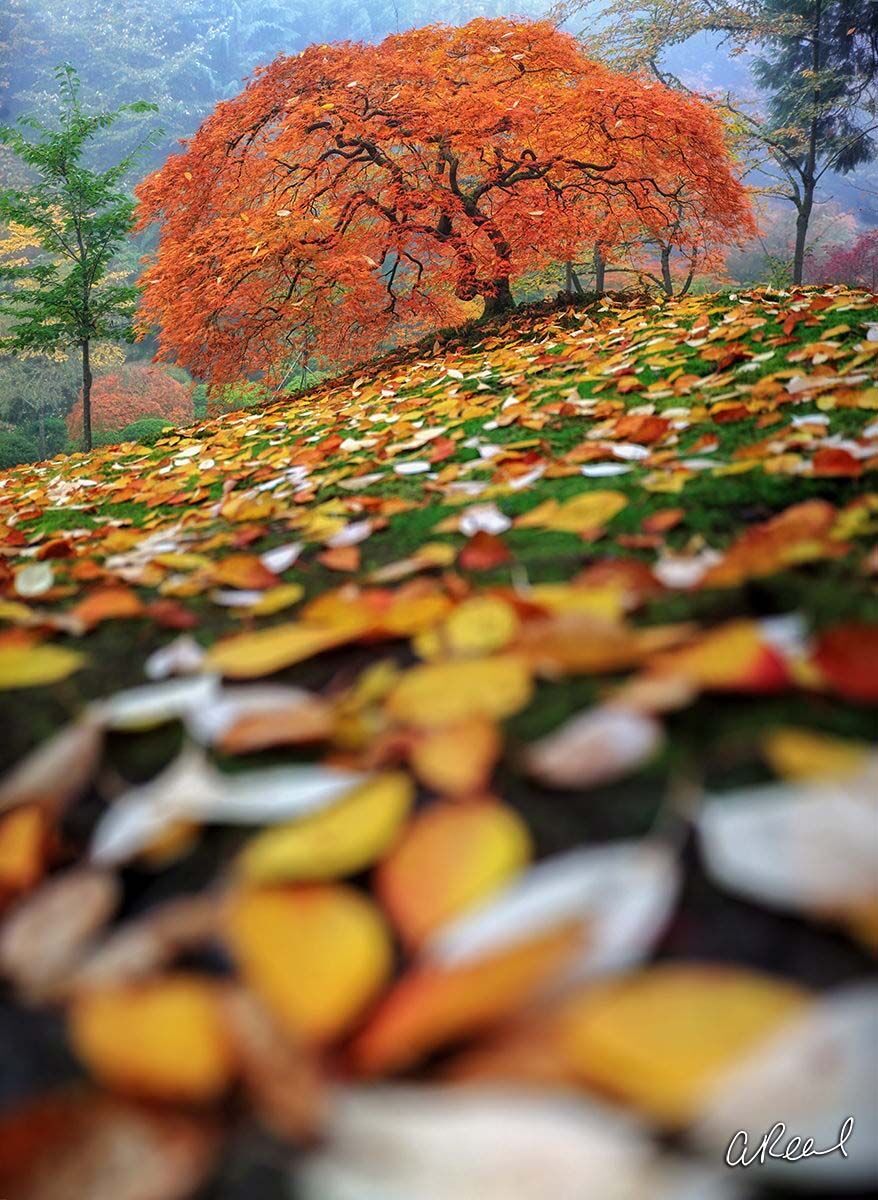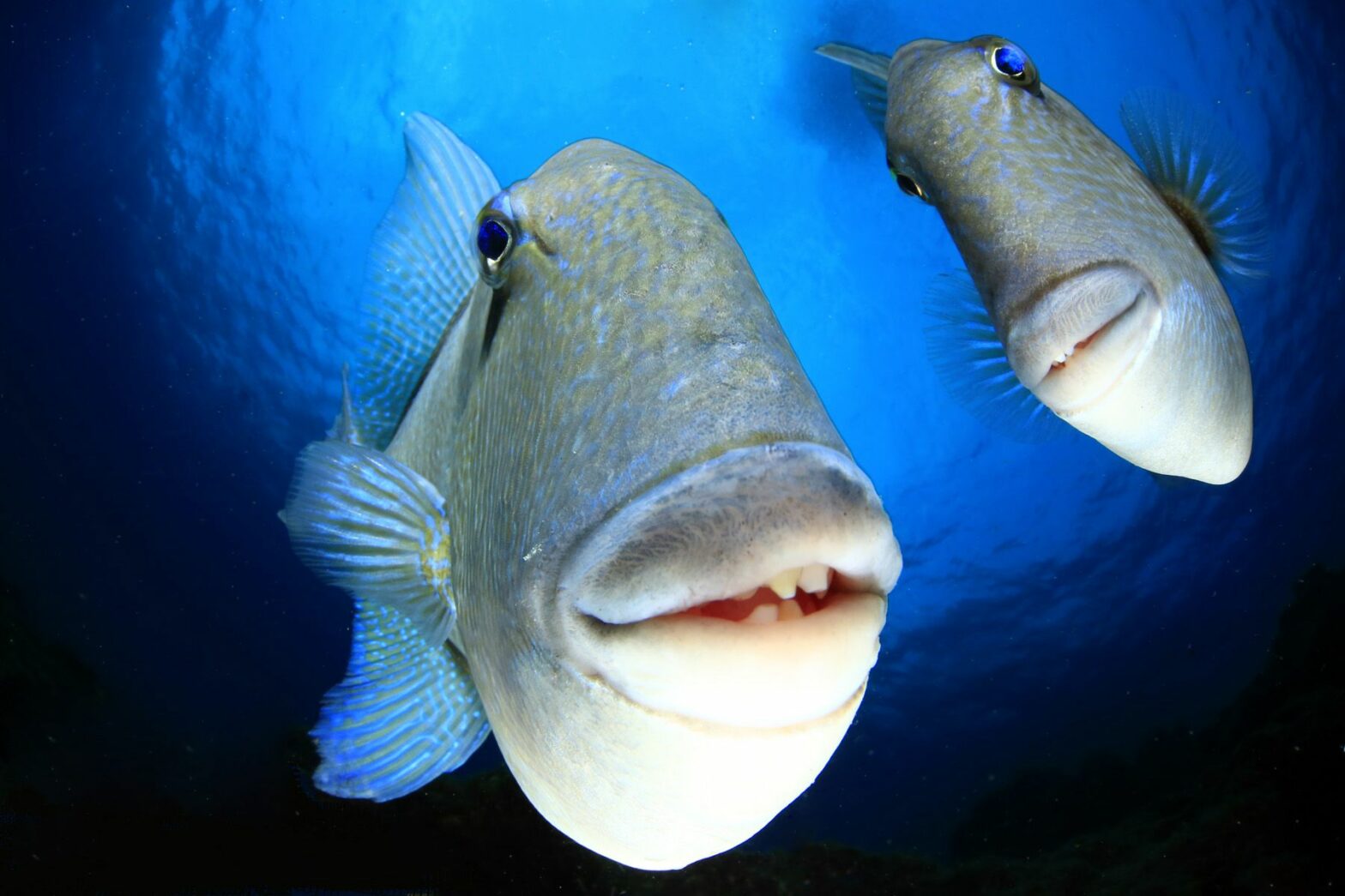[ad_1]
A few weeks ago Aubrey and I made our way south to explore Gold Butte National Monument. Though it is one of the nations more recently protected areas, established in 2016, what makes the area special is its ancient history. Sandstone sculptures shaped through countless seasons of weathering are scattered about the desert landscape. Occasionally, these natural works of art are further embellished with petroglyphs created by the ancestors of the Moapa Band of Paiutes, aging from 700 to a few thousand years old.
The Buffington Pockets and Muddy Mountains
We started our trip at the Buffington Pockets, a little outside of the monument. Here we found strangely colorful sandstone sometimes rivaling the best abstract art you might hope to find in a modern art museum. While wandering the canyons we found several mylar balloons, likely having found their way here after escaping from parties in Las Vegas. In our desert adventures we’ve found quite a few of these flying pieces of trash, however, there is often story associated with them that is fun to ponder. On our last trip we found one celebrating someones 100th birthday. This time, we found a remarkably well preserved Woody balloon.
After a night at the Buffington Pockets, we made our way across the desert landscape towards Gold Butte, taking the scenic route. We made a little detour to visit the Muddy Mountains Wilderness Area, on foot. Here we found a secluded valley decorated with colorful sandstone mounds. Near one of them we first smelled, and then saw, several recent animal carcasses including a bighorn sheep and fox. We suspect a mountain lion must have had a nice home there, but didn’t stick around long enough to find out. The following morning we were greeted by our campsite by a band of hungry wild horses.
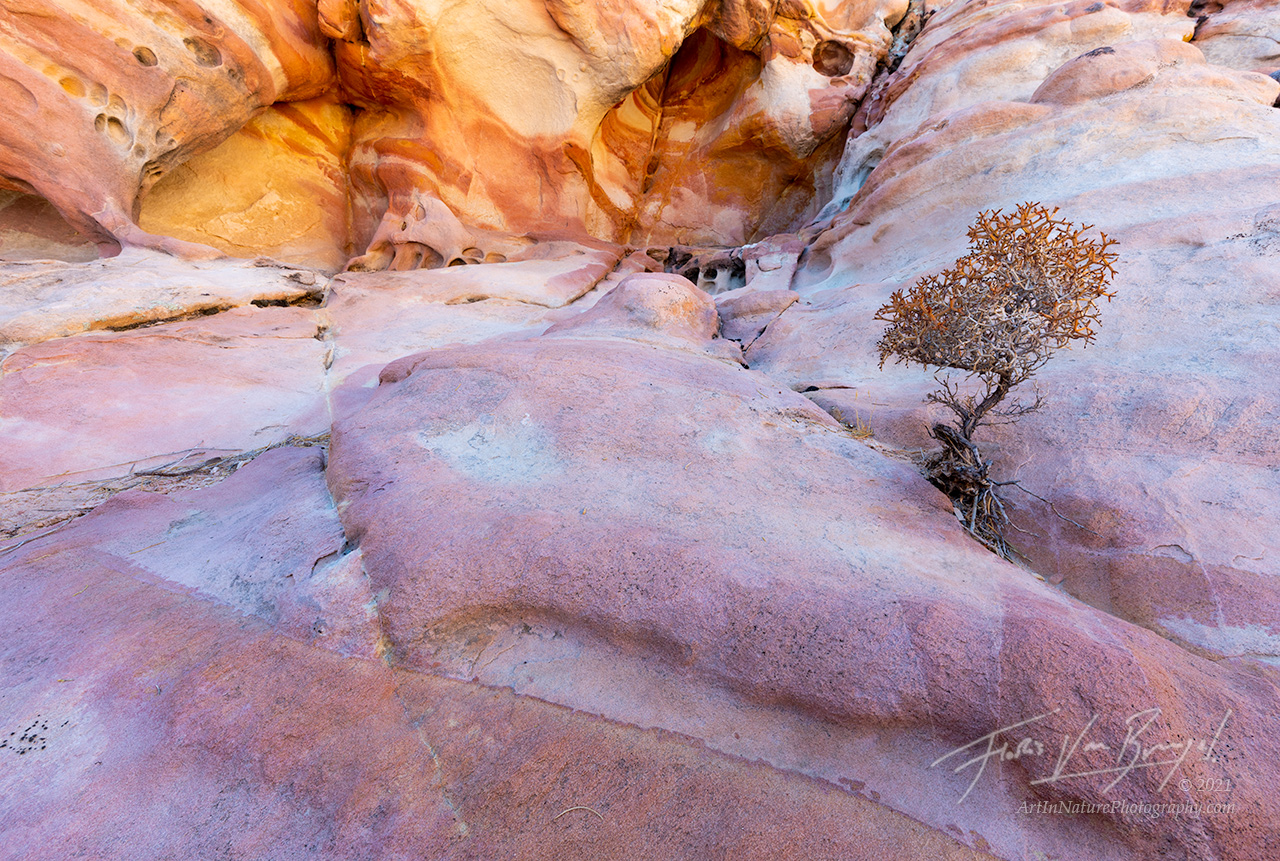
A tiny shrub, from the right angle, looks like a lonely tree in this surreal sandstone landscape.
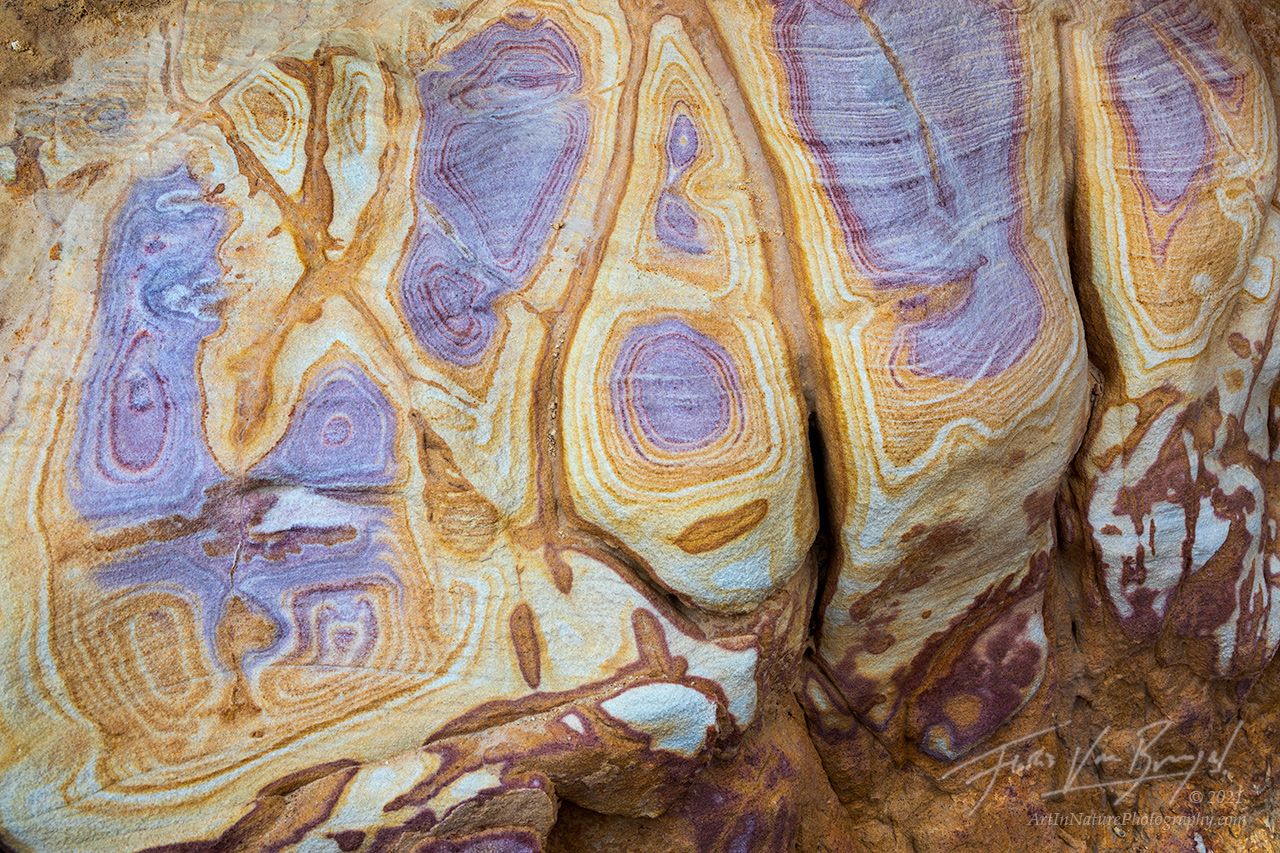
Strange colors and patterns in the sandstone abound in southern Nevada’s sandstone country.
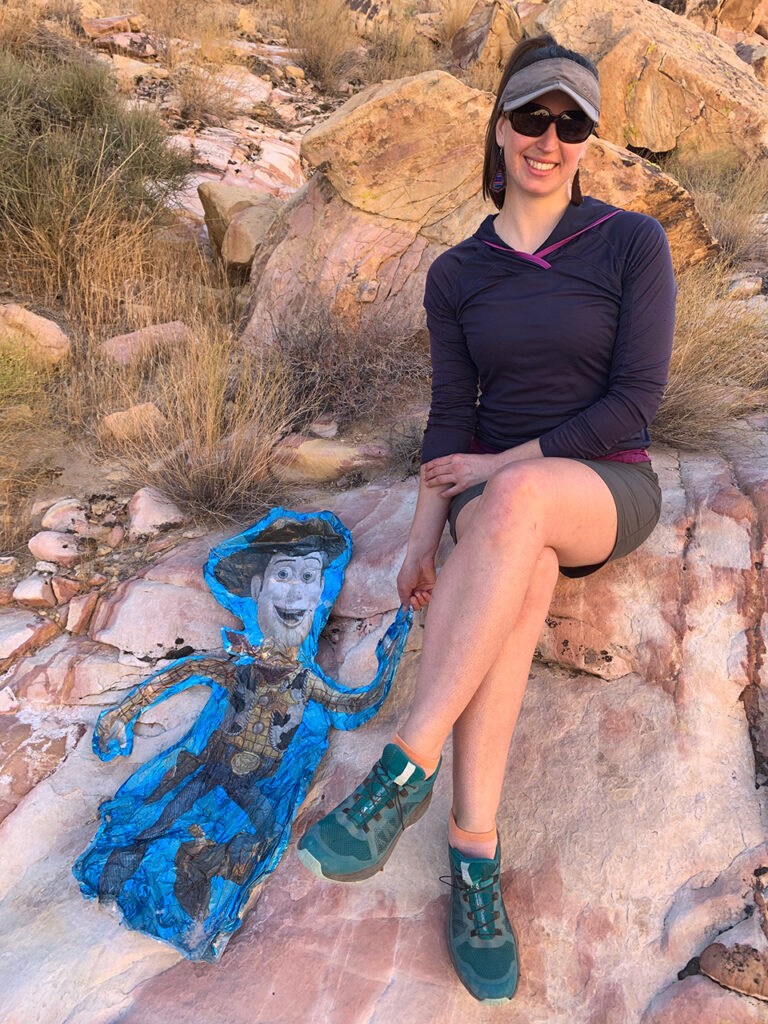
Mylar Woody
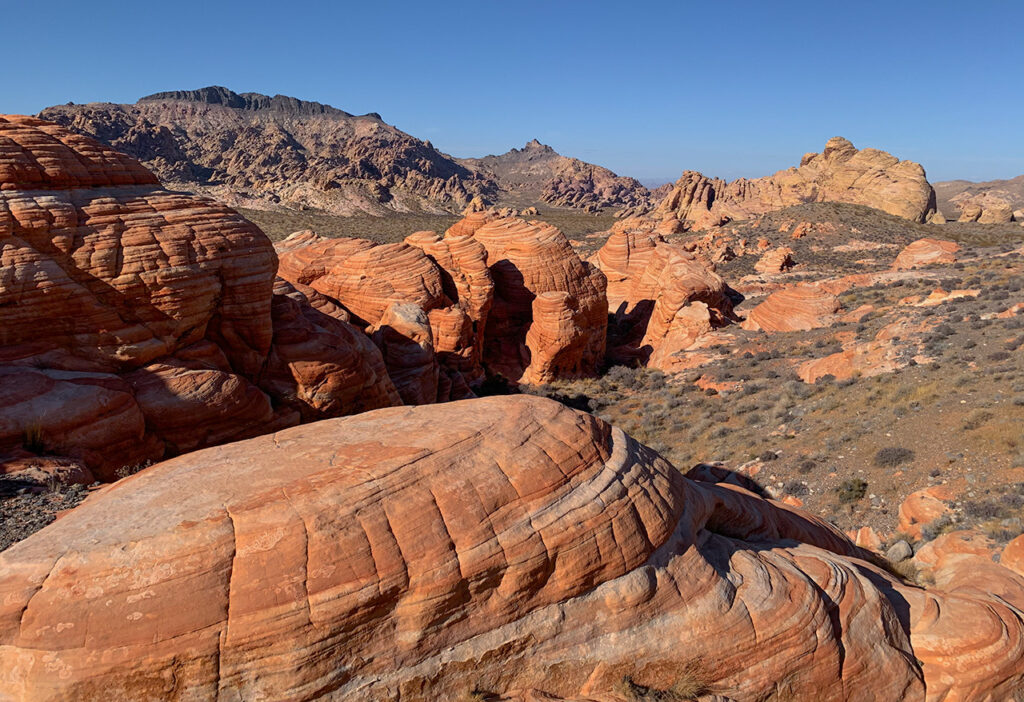
The Muddy Mountains
Gold Butte National Monument
Our first few stops in Gold Butte were to explore some of the many petroglyph panels adorning the sandstone outcroppings. I was, however, equally intrigued by the natural “art” consisting of impossibly crisp lines of color cutting through the otherwise light pink stone.
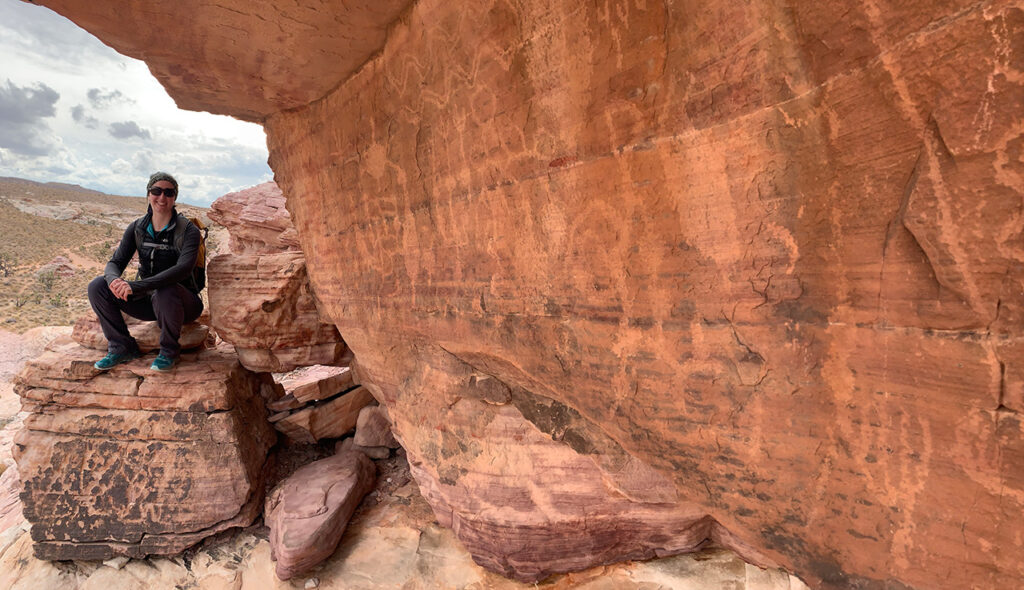
Enjoying the views and wondering what was on the minds of the people who created these petroglyphs.
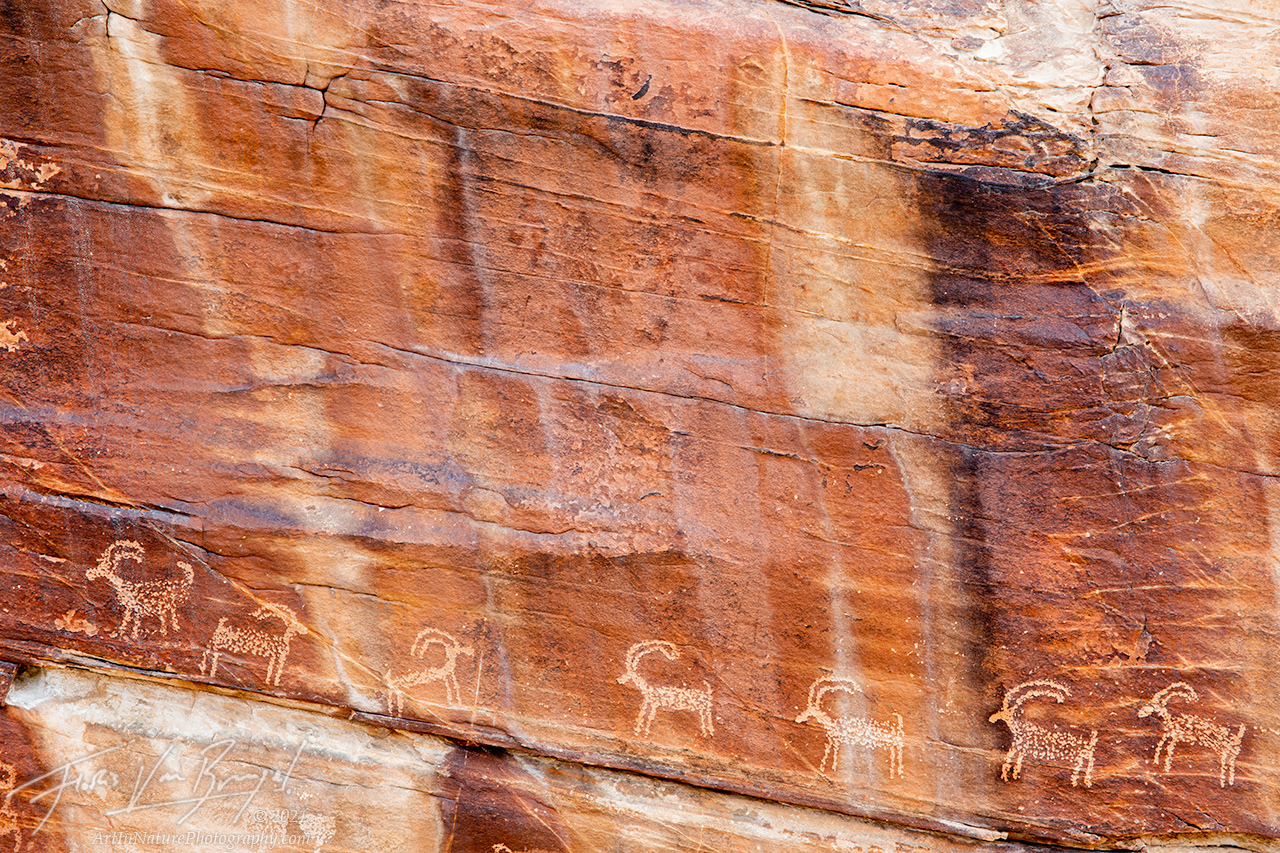
Seven of the ‘twenty-one goats’ petroglyph panel in Nevada’s Gold Butte National Monument.
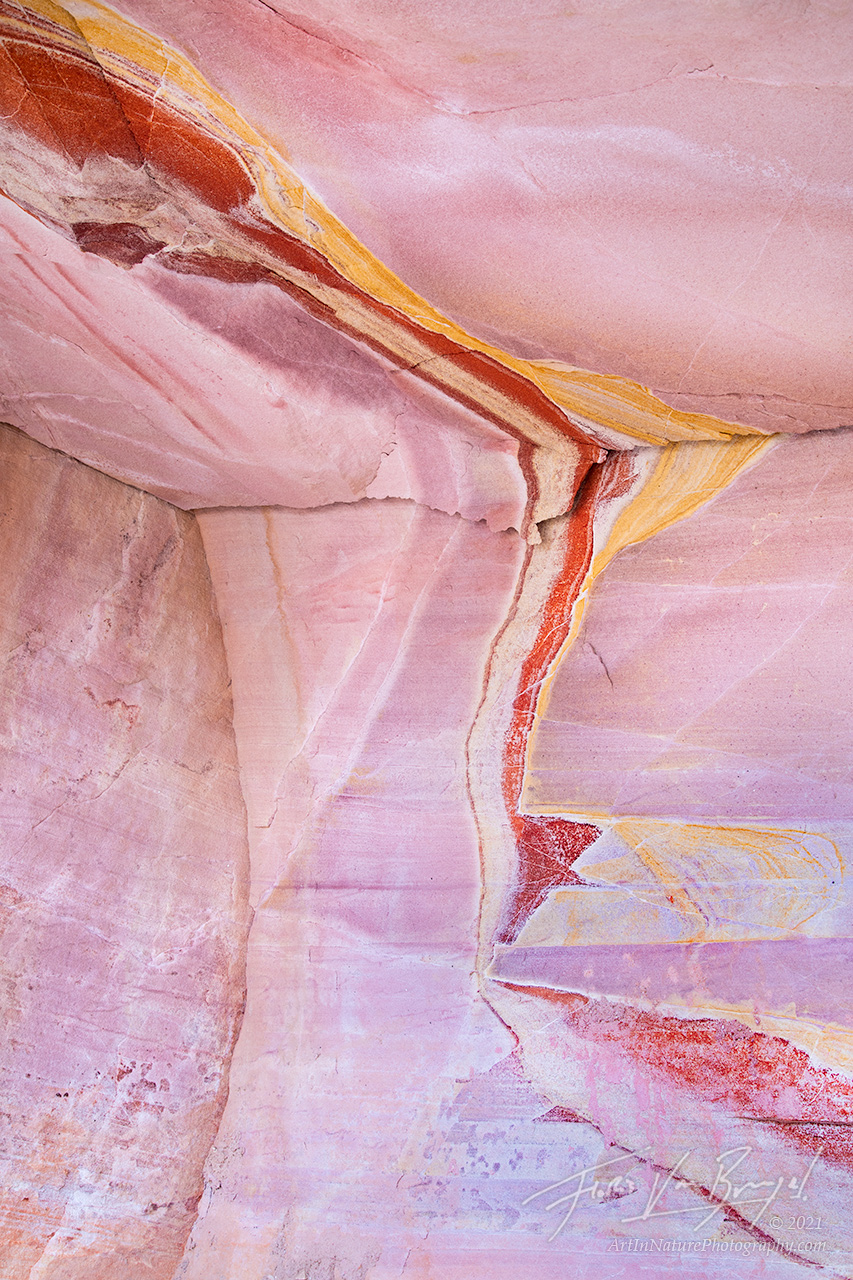
Mother nature is the original modern artist, and sandstone is her favorite canvas.
That evening we returned to an area we had visited several years ago, known as little finland. Having little to do with Finland, I imagine the name stems from the strange and fragile sandstone fins that decorate the area. Many of these larger shapes likely started out as small pockets like in this image, resembling the tafoni found along many coastlines. The white residue found in the area is consistent with the hypothesis that these structures likely formed, and continue to evolve, through salt weathering.
Overnight a significant thunderstorm moved through the area and listened to the pounding rain and crashing thunder from the comfort of our bed in the truck. The following morning Aubrey got to enjoy her coffee in bed while taking in the lovely scents of a wet desert.
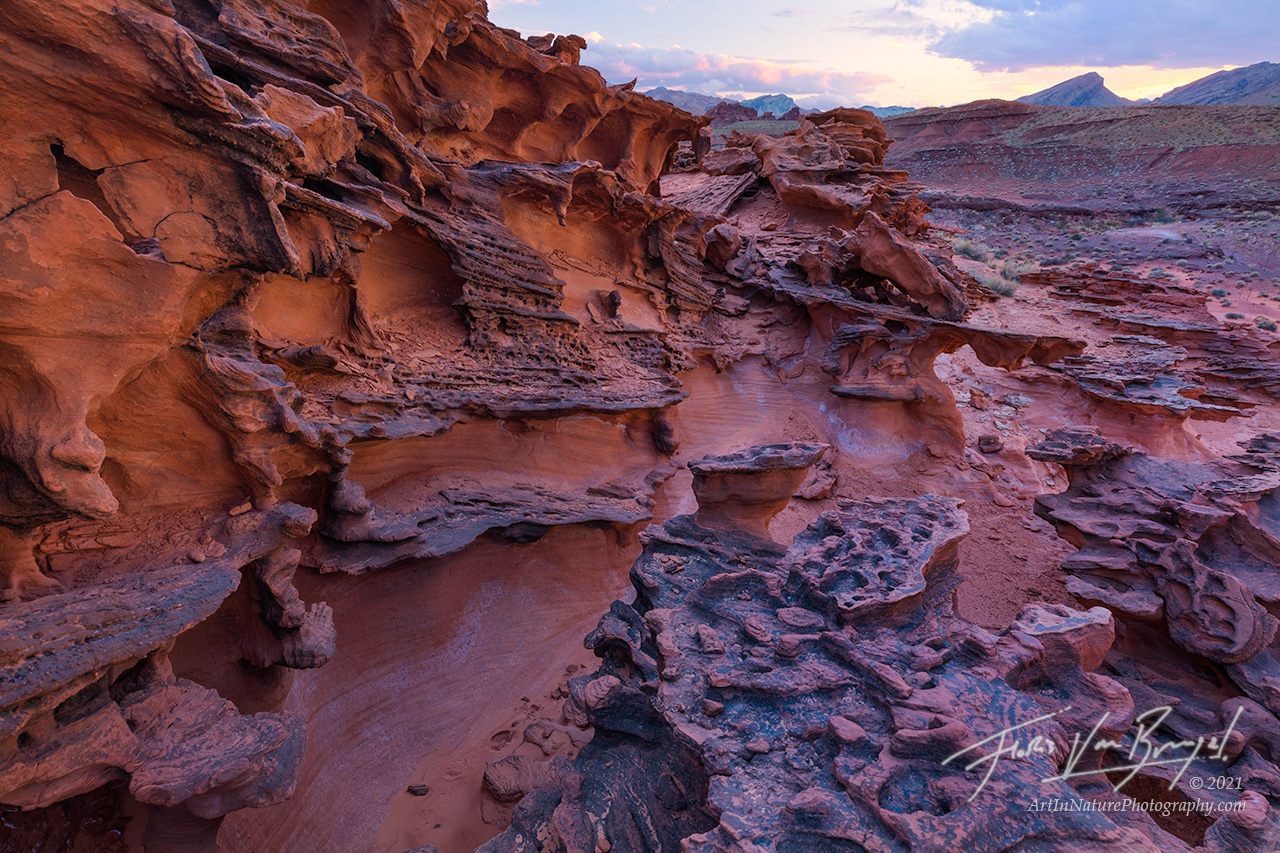
Weathered sandstone takes on strange shapes, almost like chocolate melting in the sun. Found in Gold Butte National Monument, NV.
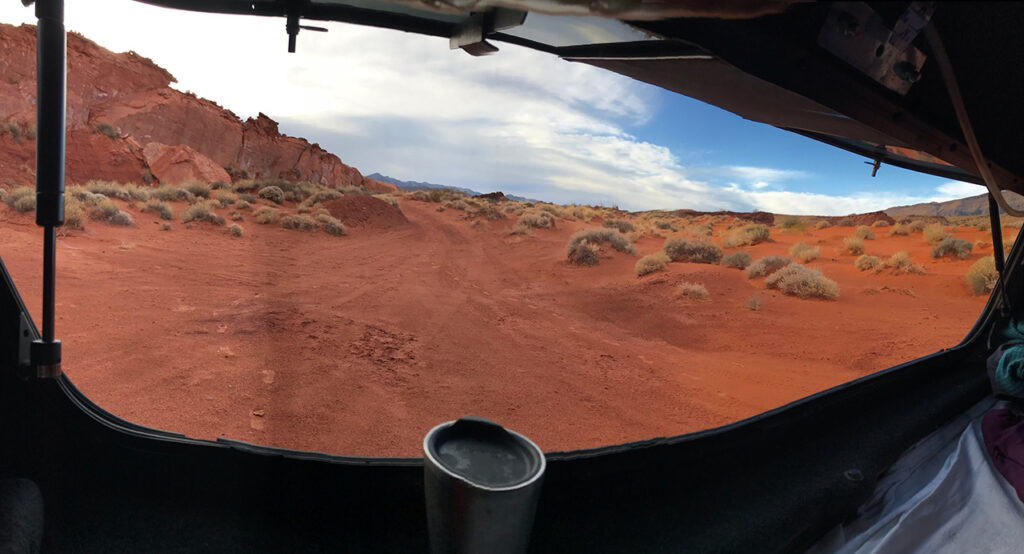
Morning coffee in bed.
On our last day we explored a few other sandstone outcroppings in the landscape, finding several more remarkable petroglyph panels. Although people have no doubt written theses about the meaning of these panels, I myself wonder if some of them weren’t simply the works of young men and women looking to make their mark on the world.
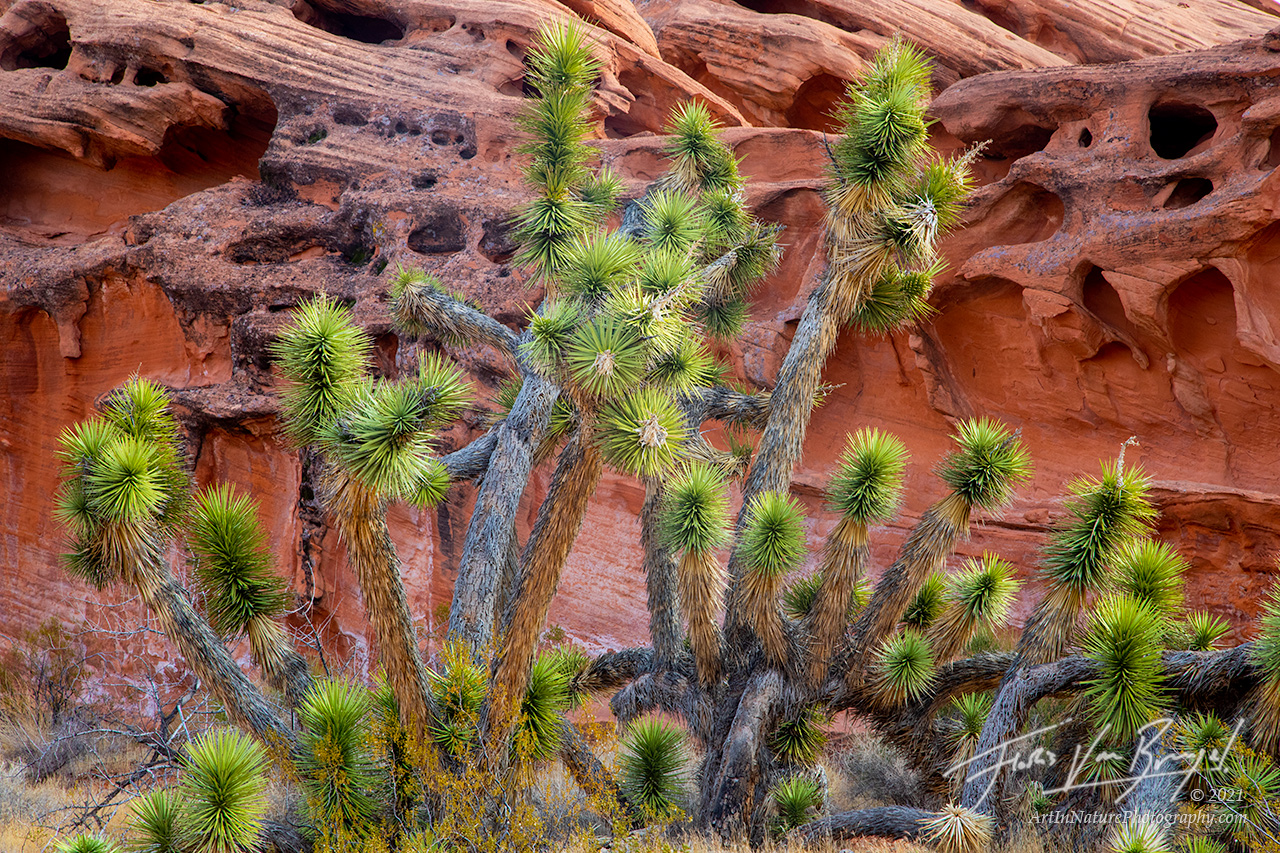
The spiky green Joshua Trees contrast beautifully with the sensual and smooth red sandstone found in Nevada’s Gold Butte National Monument.
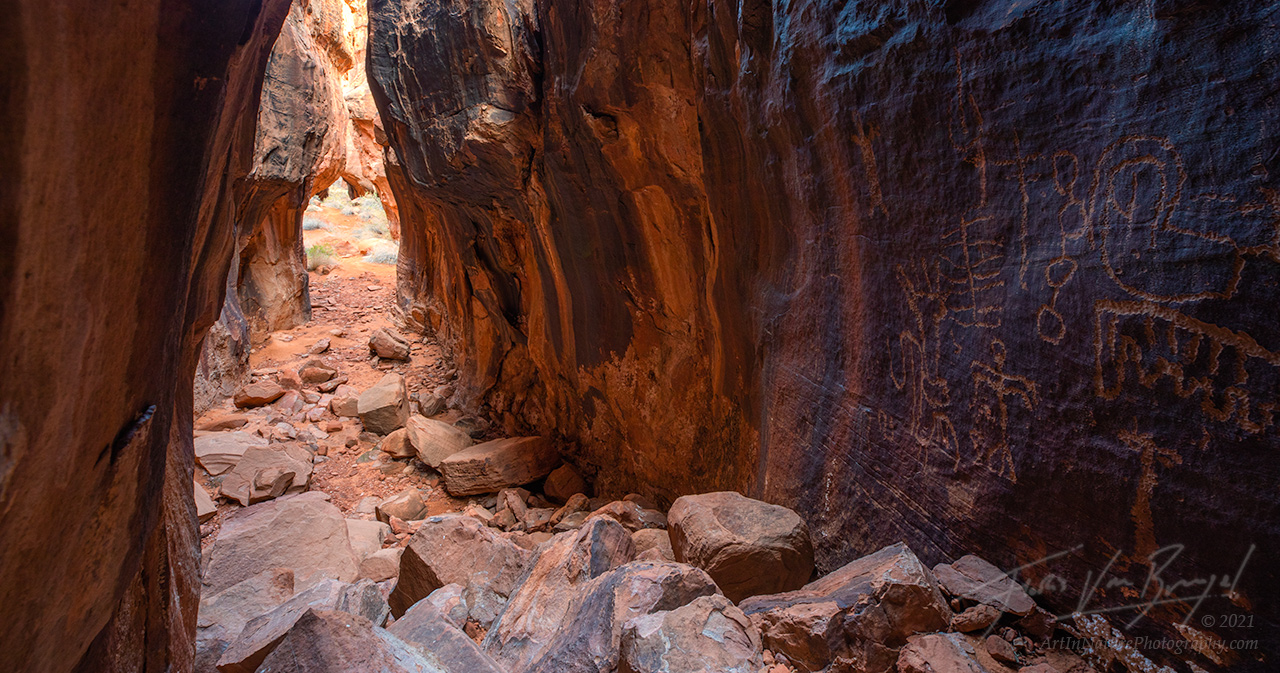
Petroglyphs adorn the walls of this narrow sandstone canyon in Nevada’s Gold Butte National Monument.
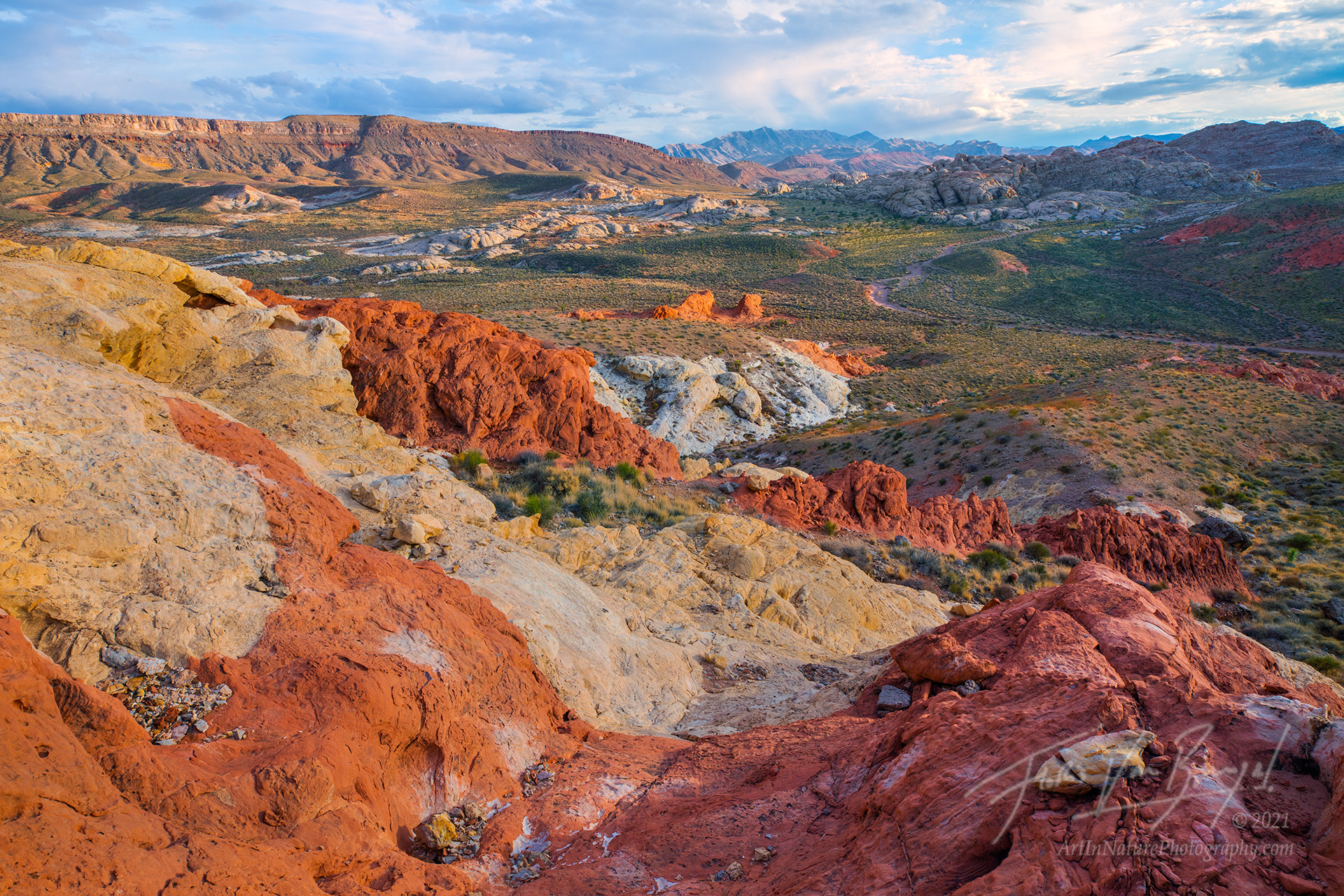
Protrusions of colorful sandstone adorn the wide open country of Nevada’s Gold Butte National Monument.

The Circus
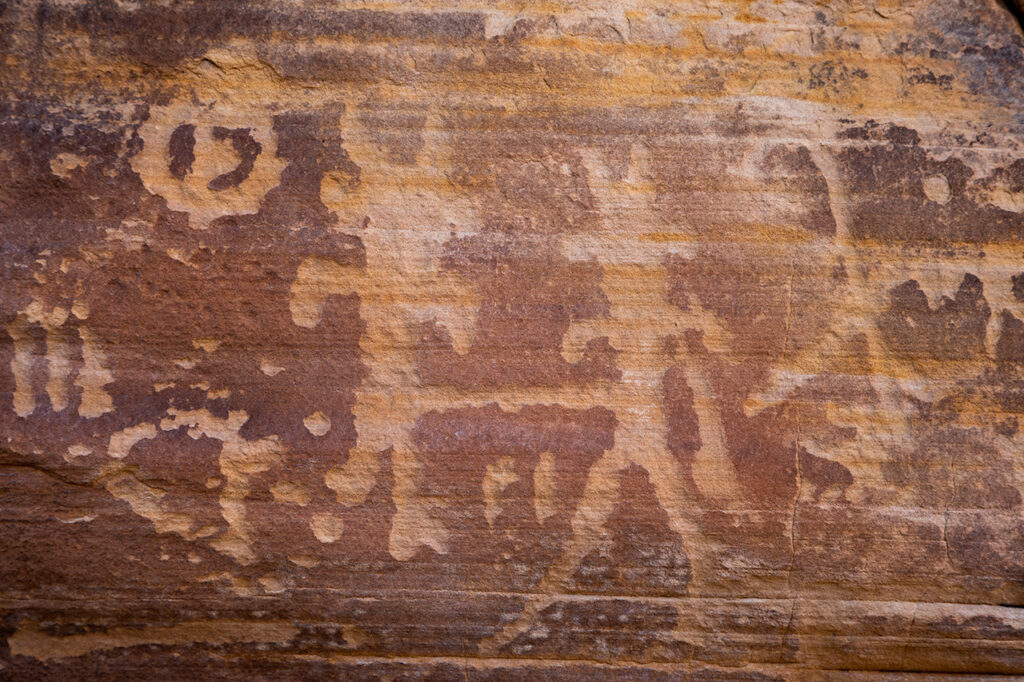
The goat men. What do you suppose they are up to? Who made this “drawing”, and why?
Tags: desert, gold butte, gold butte national monument, red rocks
[ad_2]
Source link
